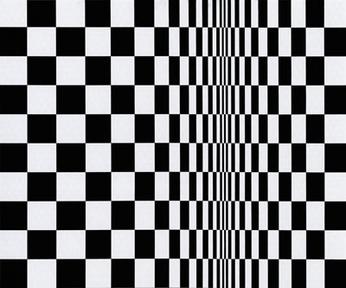The Optical Experience Latin Art Core Gallery
PS Art (Pedro Sarracino)
video by Vive Miami News with Vivian Fulop
1646 SW 8th ST Miami, Fl 33135
Open by Appointment only
In the middle of the 20th century, the first echoes of the worldwide concrete movement burst into Cuba. The proposals of non-objective painting in our country were related to a period of feverish creative activity in our art. In a decidedly figurative Havana, his daring actions contaminated even recognized masters of the historical vanguard. This was undoubtedly the moment of abstraction for Latin America. Some of the Cuban concrete artists were formed in the melting pot of nationalities and freedom of thought that was the post-war Paris Academy, but others operated from Cuba or wove an intense connecting skein with their Argentine and Caracas counterparts. In 1958, the group 10 Concrete Painters was formed, which had a short life (1958-1961) but brought together artists with an extensive career. The resonance of this creative experience transcended the period of collective action and continued to be noticeable in the future artistic strategies of that extraordinary group of creators. From diverse geographies or from the insular context itself, his discourses were forever marked by the power of linguistic synthesis with which his practice in concrete art endowed them. The abstract art movement Op art came to international attention in the mid-1960s, an era of global social and technological change. The movement, which placed emphasis on viewer perception by exploring optical effects in painting, sculpture and light installation, quickly gained in popularity but met with considerable criticism. The Op Art movement pioneered the integration of technology into art, innovated the concept of viewer participation, and introduced an emphasis on immersive experience/ideas that contemporary art embraced and incorporated. Op became a defining moment in the history of modern art, manifesting an aesthetic viewpoint that engages the process as both a tool and a subject. This perceptual emphasis, involved both the eye and the mind, by employing structural variations, contiguous compositions, linear patterns, and color interactions to generate formal ambiguity, special incongruity, and retinal vibrations.




